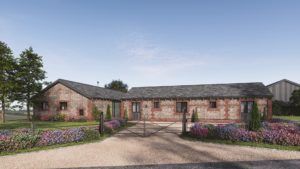Community Infrastructure Levy, or CIL, is a chargeable levy which can be imposed by Local Planning Authorities (LPAs) against new development in their area. The purpose being for the monies collected in this way to help fund and deliver local infrastructure needed to support development in the area.
Not all LPAs have adopted CIL, and it is only those where the adoption has been consulted on, approved, and a charging schedule setting out the levy rates agreed and published, that have. The levy rate can differ between LPAs, and between types of development. However, they are based on a £1 per square metre basis. Larger development will attract a greater levy. New development which creates a net increase in floor area of 100 square metres or more, will likely attract a charge.
There are some reliefs and exemptions available. For example, agricultural buildings often attract a far lower rate than other types of development, and in most cases exemptions altogether. This is however specific to the LPA, and whether they have applied a reduced rate or excluded them from the charging schedule altogether.
If proposing large agricultural buildings and developments, it is advisable to check with the LPA at an early stage as to whether the proposed development will attract a charge. This can have large implications in terms of the financial viability of a project.
In addition to the above, self-build dwellings are also exempt. However, a strict criteria has to be met such as terms and period of occupation following completion. The correct relevant forms also have to be provided to the LPA at varying stages of the process.
As well as the above, there are also other exemptions and reliefs such as for buildings that are not occupied by personnel. Buildings which sole purpose is for housing fixed plant and machinery, and structures that are not buildings, also should be exempt from the charge.
In relation to change of uses and replacement buildings, the charge is only payable on the net gain floor space. However, the building changing use, or being replaced, has to have been in use for its lawful use for a continual period of six months within the preceding 36 months.
There is a right of appeal on any charges levied against a development. However the advice is always to check at the outset of any proposed development, and if seeking reliefs or exemptions ensure the correct forms are completed and submitted at the relevant times, seeking relevant professional advice as required.






